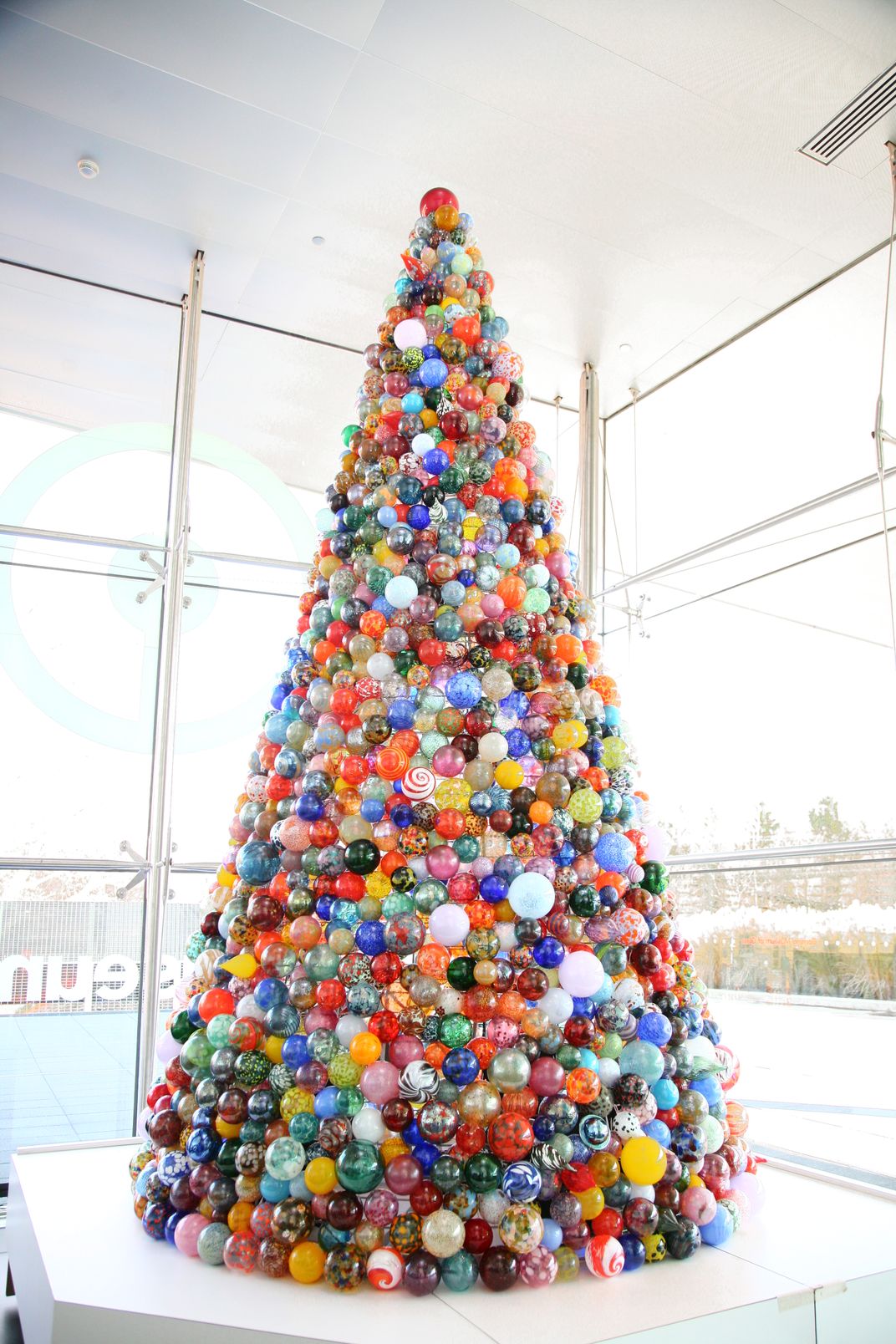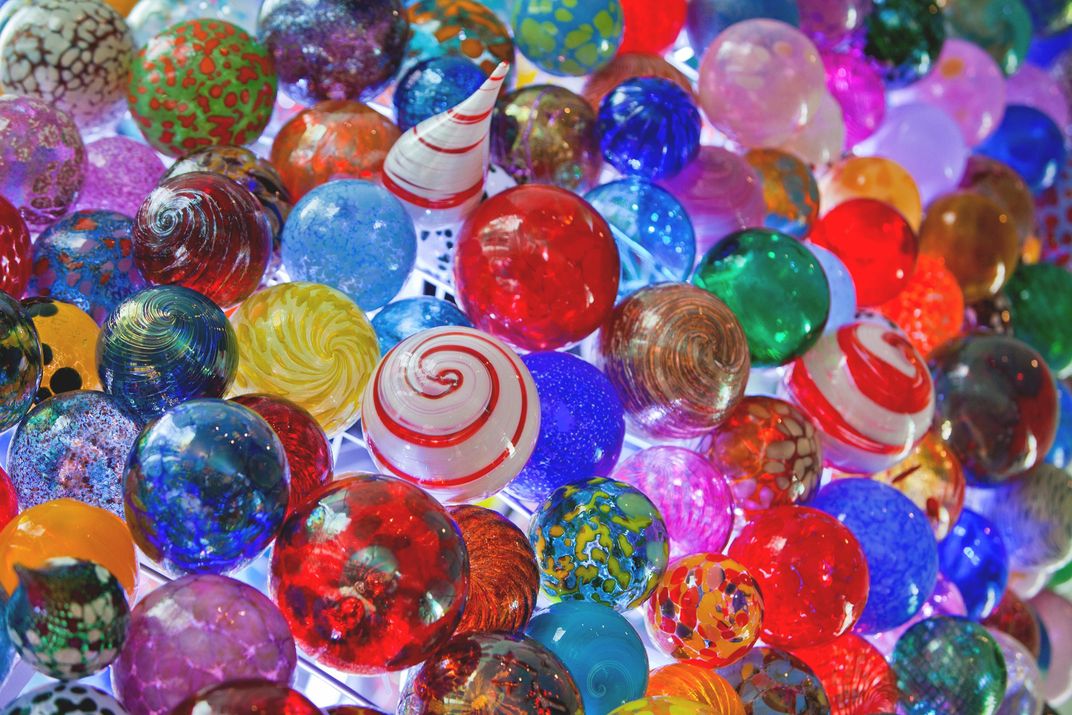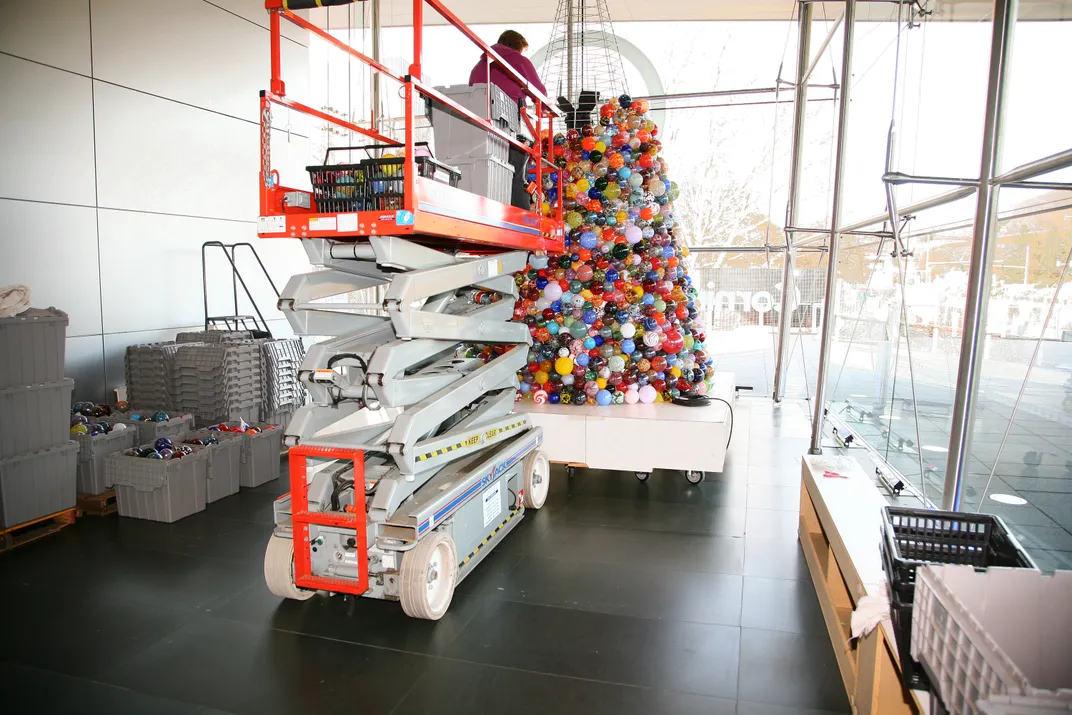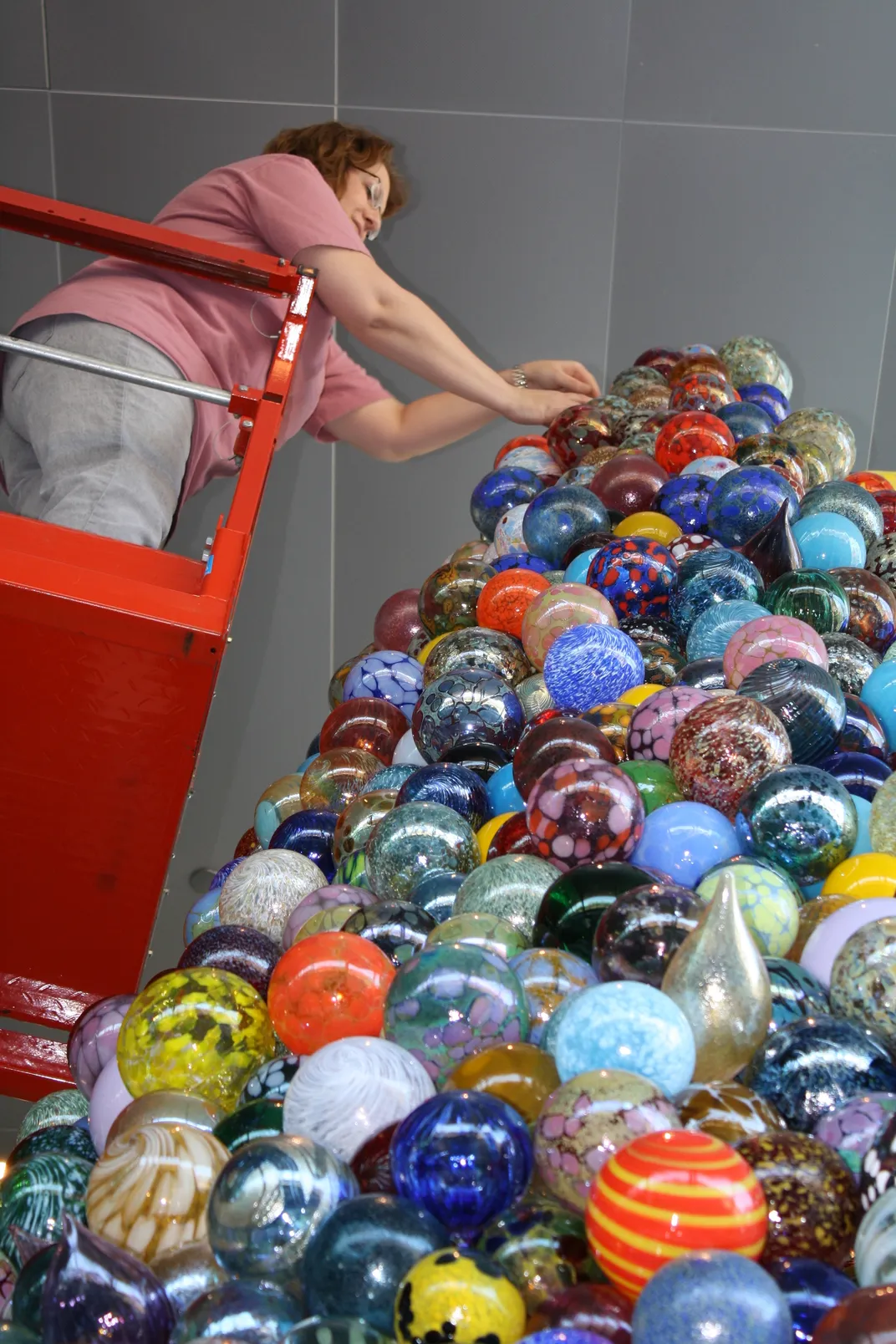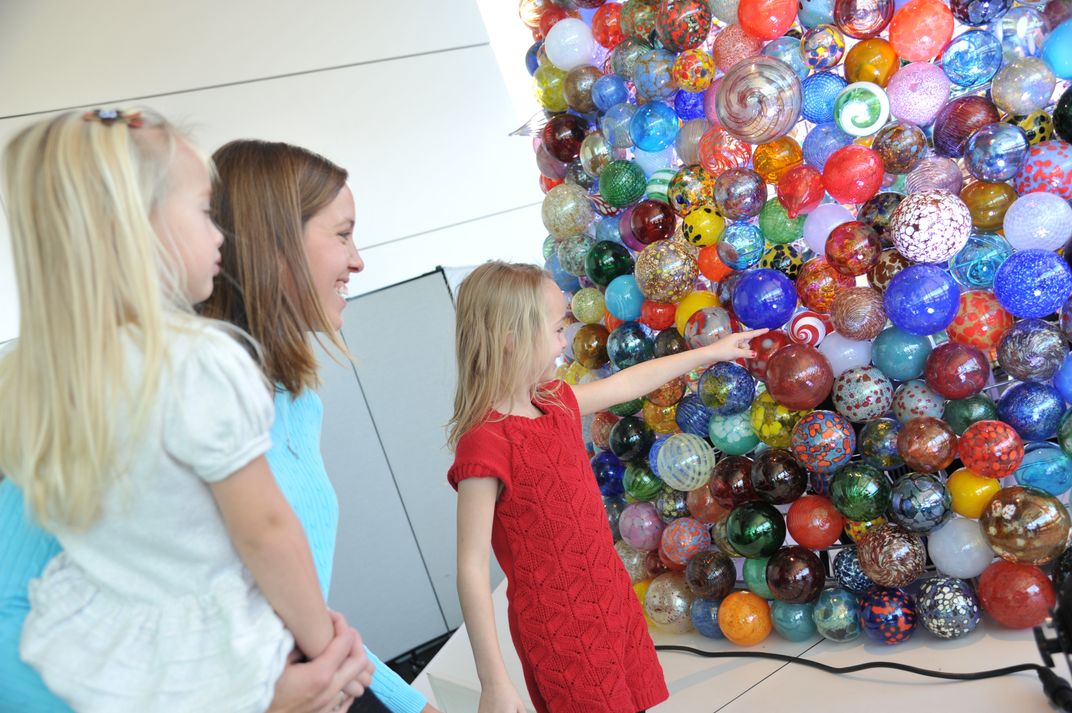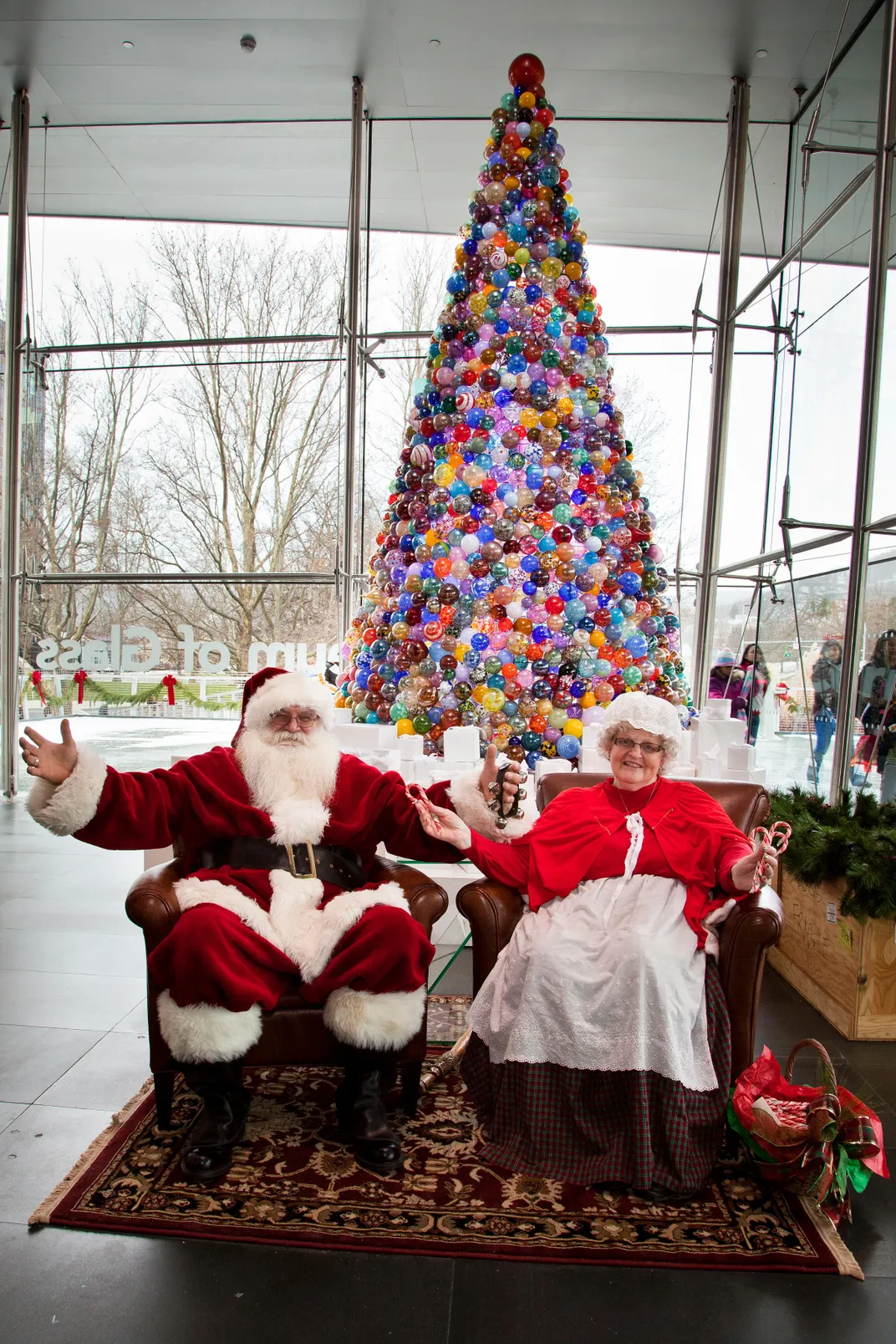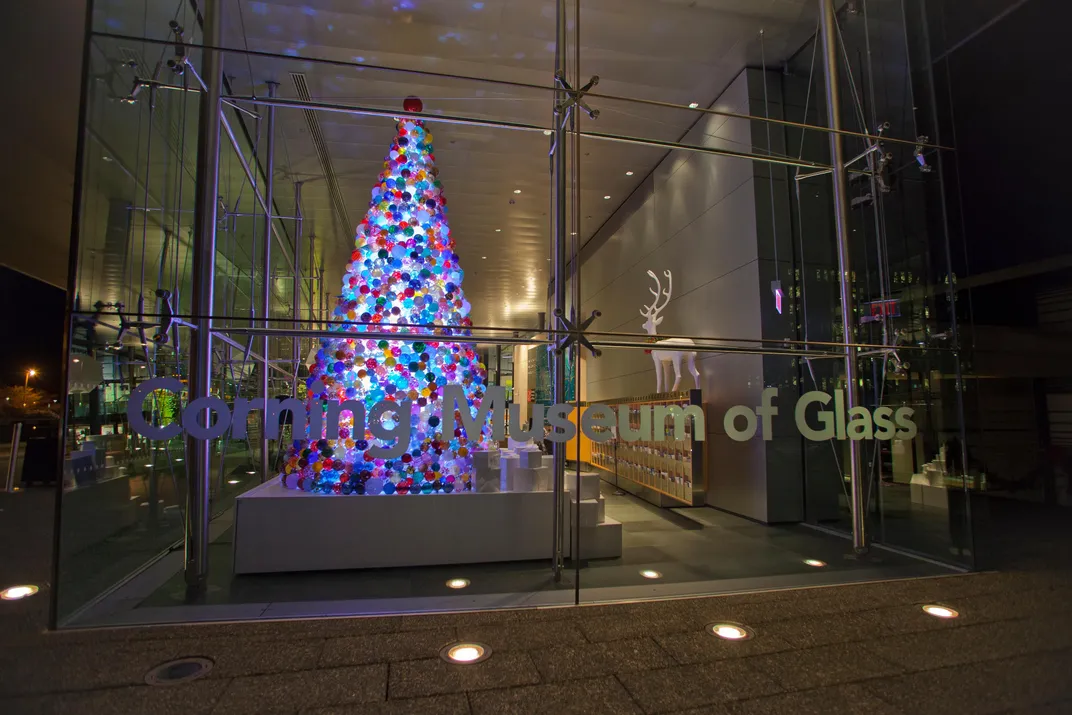This One-of-a-Kind Christmas Tree Is Made of 2,000 Handmade Glass Ornaments
The Corning Museum in New York has a glittering holiday tradition of its own
For many people, the decorating of the Christmas tree signals the start of the holiday season. For the Corning Museum of Glass in Corning, New York, the season is in full swing with a glittering 14-foot tree made of thousands of handmade glass ornaments.
Since 2008, the world-renowned museum, which boasts a collection of more than 45,000 glass objects that span 3,500 years, has been drawing thousands of visitors each winter to marvel at its sparkling tree. There’s no other holiday tree like it in the world, and no two of the tree’s ornaments, which are created by a team of resident glassmakers, are the same. The tree is so elaborate that it takes several days to install inside the museum’s glass-walled lobby. Once the final sphere has been hung, lights from within the tree illuminate it from the inside, making it glow like a giant, festive lightbulb.
“The tree is a very monumental thing,” Eric Meek, manager of the museum’s hot glass programs, tells Smithsonian.com. He should know—he gets to help maintain it. Meek, who has been making glass for 20 years, is one of the gaffers (glassblowers) who helped make each ornament. Although the majority of the decorations get reused each year, it’s not uncommon for a few of the fragile glass pieces to break during the installation process. Whenever that happens, either he or another gaffer goes to one of the museum’s on-site glassmaking studios to make a replacement.
“Each ornament has a glass hook on the top that looks a little bit like a Hershey’s Kiss in shape, but with a hole in the center,” he says. “That’s the part that typically breaks first.”
Although the individual ornaments are not for sale, museum visitors can try their hand at making their own glass ornaments by signing up for a glassblowing class at the museum. Under the instruction of a professional gaffer, students can select the color and shape of their ornament and blow air into the molten-hot blob of glass using a blowpipe to give it a spherical shape.
“When we’re working with glass, it’s essentially the same temperature as lava in a volcano,” Steve Gibbs, senior manager of the museum’s hot glass programs, tells Smithsonian.com. “People are fascinated when they get to experience the raw power of nature by transforming sand into a beautiful piece of artwork.” Gibbs has been working with glass since he was 14 years old and worked as an apprentice at his uncle’s stained-glass company. After spending much of his career at Corning, he came up with the idea for the holiday tree eight years ago.
“The museum has always been a gathering place for the community, so I wanted to come up with something special for the holidays that locals could embrace, but in a way that the world would pay attention to,” he says. “We decided to build a tree that takes advantage of what makes glass so magical, which is its ability to refract, reflect, and transmit light. The best part is that we can reuse the ornaments each year, but the placement of each one is different from year to year, so the tree never is the same. Just as a live tree isn’t the same from one year to the next, our glass tree evolves every year.”
You can see the one-of-a-kind holiday tree at the Corning Museum of Glass through January 3. Also on display for the winter is a life-sized family of snowmen, which will be on display January 12 through February 28.
Planning Your Next Trip?
Explore great travel deals
Smithsonian magazine participates in affiliate link advertising programs. If you purchase an item through these links, we receive a commission.
